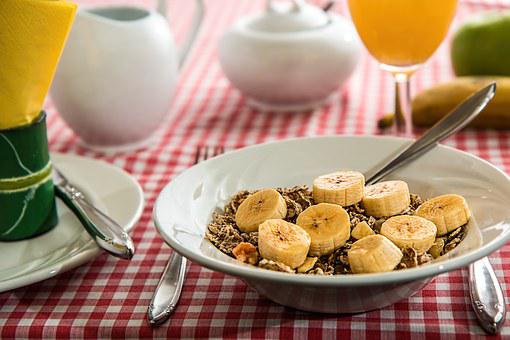If you want to improve your metabolic health, you should look into following a Pro Metabolic Diet. This diet is designed to help optimize your metabolism and promote better overall health.
What is metabolism?
In simple terms, metabolism is the process your body uses to convert the food you eat into energy. It involves thousands of chemical reactions, all controlled by specific proteins.
Your digestive system breaks down the carbohydrates, fats, and proteins in the food you eat into simple sugars, fatty acids, and amino acids. The compounds are absorbed into the blood which then takes them to the cells. The cells can use the energy from the compounds either immediately or store it for later.
The main tissues that store energy in the body are body fat, muscles, and the liver.
There are two different types of metabolism that happen at the same time.
Anabolism is the “constructive” metabolism involved with cell growth in the body, the building of new tissues, and the storage of energy.
The second process is catabolism, which is when the body breaks down tissues and energy stores to increase the fuel supply for certain functions.
Metabolic Rate
The speed at which your metabolism works is known as your calorie expenditure. This is how many calories your body burns within a set amount of time.
There are several different types of metabolism. For example, your metabolism when you are sleeping is known as your basal metabolic rate (BMR).
Learn your BMR by clicking on this link to Health Surgeon’s BMR Health Calculator!
Even while you’re resting, your body is working hard to maintain your heart rate, breathing, and body temperature. The BMR is the rate of metabolism your body uses when it is at rest.
You might have also come across the term TEF before, which refers to the number of calories your body burns while it’s digesting food. TEE, on the other hand, is the number of additional calories you burn through exercise.
You burn more calories when you are moving around or even just standing still, than when you are resting.
This term, NEAT, refers to the energy used for all the non-exercise activities that you do in a day.
What affects your metabolic rate?
There are several things that can impact your metabolism.
Certain hormonal disorders can cause your metabolism to slow down. So can aging – partly because older people tend to move around less, but also because certain bodily functions become less efficient as we age.
However, even when body size and muscle mass are taken into account, there are still people who have a high metabolic rate and people with a low metabolic rate. There are other factors that can affect metabolic rate, such as body size and muscle mass. Larger people and those with more muscle mass naturally burn more calories. However, even when these factors are taken into account, there are still people who have high and low metabolic rates.
The body works harder in cold weather to keep you warm, which can lead to an increase in metabolism.
The most important factor in your metabolism is how much you move. Other than just making you feel good, exercise has plenty of benefits that impact your everyday life. For example, just 45 minutes of vigorous activity can raise your metabolic rate for 14 hours.
A well-balanced diet is not only key to maintaining a healthy weight, but it is also essential for metabolic health.
Signs of a Good Metabolism
A good metabolism allows people to burn a lot of calories and maintain a healthy weight. In some cases, a fast metabolism can actually make it difficult for people to gain weight even when they want to.
Another sign that you may have a higher metabolism is if you sweat a lot, even without doing much physical activity. This is because a higher body temperature triggers quicker metabolic reactions.
Other signs that your metabolism is working well include feeling hungry often, having a strong sex drive, and having lots of energy. Sometimes this energy can make it difficult to fall asleep.
Your metabolism will function properly and convert calories and oxygen into energy at a high rate when it is getting the support it needs. This energy will support your bodily functions.
Below are some indicators of a healthy metabolism.
- Good digestion
- Strong libido
- Warm hands & feet
- Good / stable mood
- Pain-free periods / no PMS
- Steady energy
- Strong immune system
- Clear skin
- Strong hair & nails
- Good sleep
Signs of a Poor Metabolism
One sign of poor metabolism is weight gain, which often appears around the middle. This is especially common in older people, who are often referred to as having “middle-aged spread.”
A slow metabolism can cause a build-up of gas or bloating, as well as hormonal imbalances which can cause dry skin or thinning hair. It can also lead to problems with blood sugar levels.
Other signs that a person has a slow metabolism include a low sex drive, depression, difficulty sleeping, and a weakened immune system. People with a slow metabolism may also find that they are unable to lose weight no matter how much they diet or exercise.
The metabolism is responsible for most functions in the body. If it does not get the support it needs to function properly, it will stop supporting some functions that are not essential for survival.
The indicators of a slow metabolism are mostly the inverse of what a healthy metabolism looks like.
- Poor digestion
- Cold hands & feet
- Low sex drive
- Painful periods / PMS
- Insomnia
- Depression & anxiety
- Dry hair & brittle nails
- Weak immune system
- Inability to cope with stress
- Skin problems
If your metabolism isn’t getting the right fuel, it will stop supporting the bodily functions that aren’t necessary for survival.
How Metabolism Works
Your cells get energy from glucose through a process called cellular respiration.
The glucose molecule is gradually broken down during cellular respiration and eventually converted to energy. This energy is captured by the cell in the form of ATP.
Cells rely on a continual supply of energy and while they can use fats and proteins for energy, they prefer to use glucose. Glucose comes from carbohydrates.
Many people restrict carbohydrates in their diets, especially good carbohydrates like fruit, honey, maple syrup, and root vegetables. For years, I was guilty of this myself. If you consume fewer carbohydrates, your cells will not have access to the same level of energy. This can impact how well your cells are able to carry out their necessary functions.
Benefits of a Pro-Metabolic Diet
A pro-metabolic diet has many benefits. Proper nourishment helps keep your body functioning properly.
If you have a slow metabolism, you will gradually begin to notice an improvement in your symptoms.
The most significant differences I have observed since I started eating pro-metabolically are constant energy throughout the day, improved sleep quality, regrowth of my eyebrows, increased emotional stability, and many more benefits.
What are Pro-Metabolic Foods
Pro-metabolic foods contain nutrients and minerals that the body can easily use, are easy to digest, and help the metabolism work better instead of making it work less efficiently.
Best Pro-Metabolic Foods
Some of the best pro-metabolic foods are listed below.
- Raw carrots
- Beef and liver from grass-fed cows
- White potatoes
- Orange juice
- Organic eggs
- Raw milk from grass-fed cows
- Raw cheese from grass-fed cows
- Raw butter from grass-fed cows
- Bone broth
- Coffee
- Shellfish
- White fish
- Coconut oil
- Fruit
- Beets
- White rice
- Honey
- Maple syrup
Worst Foods for your Metabolism
PUFAs (polyunsaturated fatty acids) are found in vegetable oils, such as soybean oil, corn oil, and sunflower oil. They are also found in many processed foods, such as margarine, salad dressings, and crackers. Foods that are high in polyunsaturated fatty acids, such as soybean oil, corn oil, and sunflower oil, are the worst for your metabolism. Many processed foods, such as margarine, salad dressings, and crackers, are also high in PUFAs.
PUFAs are very unstable and start to break down when they are exposed to light, heat and oxygen. This is not good for the human body, which is warm and needs oxygen.
PUFAs can have a negative impact on your thyroid function and decrease the amount of energy your cells have. Saturated fats are surprisingly a much healthier option.
Polyunsaturated fatty acids (PUFAs) are found in many foods, even in those that are considered healthy. The following foods are high in PUFAs:
- Sunflower oil
- Corn oil
- Canola oil
- Fish oil
- Safflower oil
- Soybean oil
- Walnut oil
- Almond milk
- Almond butter
- Nuts & seeds
Essentially, all nut butters, nut milks, vegetable and seed oils, as well as seeds and nuts, are high in polyunsaturated fatty acids (PUFAs). PUFAs are also present in many “healthy” prepackaged snack foods.
It is difficult to avoid PUFAs entirely, but it is necessary to reduce consumption as much as possible.
Bears and squirrels fatten up on a diet of nuts, seeds, and berries before they hibernate for the winter. The high amount of polyunsaturated fats in these foods helps to slow down their metabolic rate which allows them to sleep through the winter.
Aside from slowing down your metabolism, polyunsaturated fats can also encourage cancer, heart disease, diabetes, and autoimmune diseases.
Eating for Metabolic Health
Eating for metabolism isn’t just about what food you consume, but also how you consume it. What you eat and when you eat it can have a big impact on your metabolic health.
Eat 30-60 Minutes after Waking
A slow metabolism is indicated by not being hungry in the morning. If you haven’t eaten in 7-10 hours, you should be hungry. If you are not hungry, it is a sign that your metabolism is weak and your body is running on stress hormones for energy instead of appetite.
You should aim to eat something 30-60 minutes after you wake up each day. If you don’t feel like eating, make yourself do it anyway. I’ve never had a big appetite in the morning, but over the past year I’ve started to force myself to eat breakfast as soon as I wake up. Gradually, I’ve found myself getting hungrier in the mornings.
If you’re not used to eating breakfast immediately in the morning, I suggest you start with something small. You don’t have to eat a large breakfast. You may want to try eating a small amount of fruit or scrambled eggs for breakfast, or even just drink a glass of milk. As you begin to heal your metabolism, your appetite in the morning may improve.
Eat Every 3-4 Hours
A stable blood sugar level is a result of a healthy metabolism. To maintain balanced blood sugar levels, it is recommended that you eat every 3-4 hours.
Maintaining even blood sugar levels will reduce stress on the body and allow your metabolism to recover.
Only Drink Coffee after a Meal
You should never drink black coffee on an empty stomach as it can drop your blood sugar levels and increase your stress hormones.
Coffee should be consumed after a meal and blended with maple syrup and raw milk instead of drinking it black in order to maintain balanced blood sugar levels.
Eat the Right Amount of Carbs, Proteins, and Fats
You should include all three macronutrients with each meal for optimal health. Carbs are necessary for energy, protein helps with repair and metabolic function, and fats are required to transport fat-soluble nutrients and to slow the absorbency of sugars into the blood. You should eat all three macronutrients together to keep your blood sugar levels balanced.
Your meal should be divided as follows: 40-60% carbohydrates, 25-30% protein, and 20-30% fat.
I recommend using an app to track your macros until you find the combination that makes you feel the best. You will want to increase your carb consumption slowly if you are not used to eating a lot of carbs.
Avoid Refined Grains
The pro-metabolic diet endorses the avoidance of refined grains. Cutting back on white bread, pizza, and pasta will help improve your health.
This is because refined grains take very little calorie expenditure to digest. The process of digesting whole grains is more complex and requires more calories to digest.
You should include whole grains in your diet by eating foods such as whole oats, whole wheat, buckwheat, barley, quinoa, and brown rice. Some whole grains contain gluten which would need to be avoided by anyone with a sensitivity to gluten or Celiac disease.
Conclusions
The pro metabolic diet is more of a lifestyle approach that aims to make the foods you eat work better with the way your body metabolizes them.
Eating in a way that supports metabolic function can help prevent weight gain, improve your overall health, and restore balance to your body.
It is not only important to be fit and healthy, but by understanding the connection between diet and good health, you can better take care of your body.
READ MORE: Coconut Oil Health Benefits









